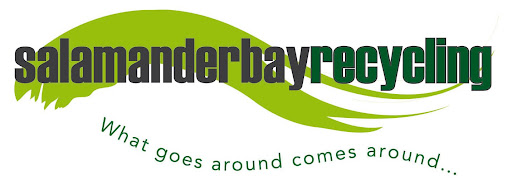Here's an image of one here:

For the last 6 months the 12 cages have been placed with 8 of Port Stephens' privately-owned caravan and holiday parks.
The park's patrons have really adopted the idea of recycling drinks cans and we are pleased to advise that through their continued efforts we have collected in excess of 1.5 tonnes of aluminium drinks cans since the program commenced in July of 2011.
Second-hand aluminium is a valuable and under-recovered resource. By applying the correct logistical approach, the benefits, both to the business and the environment, can be rewarding. And due to the fact that we are a not-for-profit community organisation which invests heavily in the local community, the knock-on effect is felt by many.
The cages, which are highly visible, are placed at strategic locations in each caravan park. For example, they are positioned close to amenities and waste collection points where people can easily access them.
When the cages are getting close to being full, the caravan park staff call us and we visit the site to service the cages, and the whole process of refilling the cages by holiday-makers starts again.
On returning to the Centre with the collected cans, they are then emptied into a much larger storage cage. When filled, this large cage is then transported via flatbed truck to the OneSteel recycling plant in Newcastle where it too is emptied and then returned to the Centre for the whole process to recommence.
Here's a shot of the large half-filled can cage:
So as you can see, it is a cycle within a cycle (or put simply: Re-cycle).
A lot of our customers, staff and volunteers collect their own drinks cans and when their bag or bucket is full, they bring it in with them and add it to the collection.
Why don't you join us? It's a good feeling knowing that you're doing your bit to help with resource recovery and conservation. And you'll be helping the community by doing so.
Here's a list of the Caravan Parks who help us with this recycling endeavour:
Middle Rock Caravan Park, Anna Bay: http://www.middlerock.com.au/
One Mile Beach Holiday Park, Anna Bay: http://www.onemilebeach.com.au/
Birubi Beach Holiday Park, Anna Bay: http://birubibeachcaravanpark.officialsitepreview.info/showpage.asp?id=1
The Retreat, Anna Bay: http://www.theretreatportstephens.com.au/
Bays Holiday Park, Anna Bay: http://www.baysholidaypark.com/
Salamander Bay Village Caravan Park, Soldiers Point: http://www.caravan-camping.com.au/caravan-parks/10,80,173
Colonial Ridge Retreat, Soldiers Point: http://www.colonialridge.com.au/site/location
Big 4 Hoilday Park, Soldiers Point: http://soldiers-point-holiday-park.nsw.big4.com.au/
Please note that we only recycle aluminium drinks cans (beer cans, soft drinks cans etc).
Steel food cans and bottles are not accepted.





